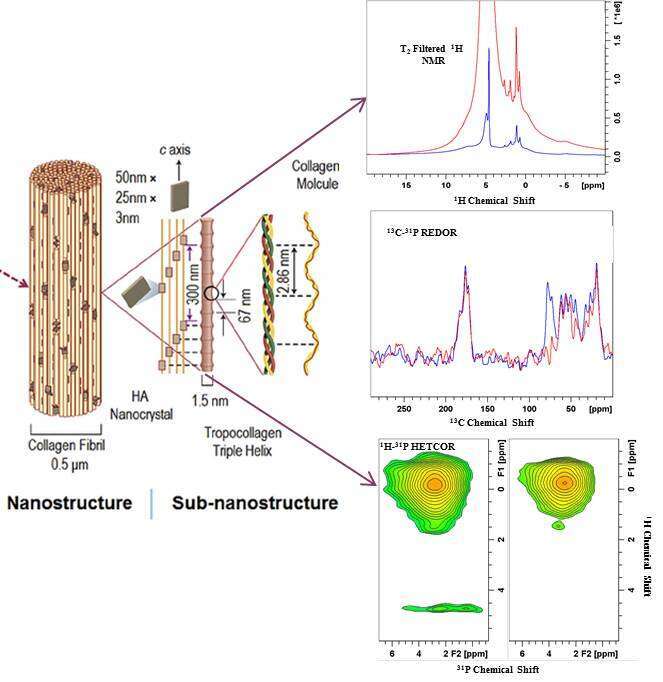
Unraveling Sub-Nanometric Scale Structure of Bone through Spectral-Edited ssNMR Spectroscopy
2Department for Restorative and Preventive Dentistry, Charité - Universitätsmedizin Berlin, Berlin, Germany
3Laboratory of Bone Biomechanics, The Hebrew University of Jerusalem, Rehovot, Israel
Abstract
Bone is a complex organic-inorganic nanocomposite material comprising collagen fibers, assembled into stiff braded patterns, supported by stacks of ~ 3 nm thick apatite (Ca5(PO4)3OH) of crystallites. These plate-shaped mineral crystallites are aligned with their 100 crystal face parallel to the main axis of the collagen fiber, forming a structure with a thickness of ~ 50-150 nm. However, excellent load resistance and overall mechanical viability of bone, would not be possible in this intricate nanocomposite structure, were it not for the tightly-controlled organic-inorganic interfaces. Though advancement in analytical tools provide higher and higher resolution imaging of bone complexity they fall short of attaining atomic-level information of the these interfaces, leaving this as a highly sought question with far reaching repercussions to biology and biomedicine of bone. Mechanistic understanding of bone mineralization processes will help better understand conditions of low or excess bone density, prevalent bone diseases. These important interfaces can be mostly investigated through solid-state NMR spectroscopic methods. Here we investigated identical bones from two types of fish, sturgeon and pike with remarkably different mechanical properties. New and established NMR techniques were employed to expose differences in collagen-mineral interfaces in the two bones. 1H T2-filtered 2D 1H-31P heteronuclear correlation experiments revealed collagen protons (typically masked by mineral hydroxyl and water hydrogens) in proximity the phosphates present inside the mineral phase of bone. 13C{31P} REDOR and 31P{13C} TEDOR experiments provided rough estimates of the distance measurements between the particular carbons in collagen and other organic molecules and inorganic phosphates in apatite.

References:
- Euw, S. V. et al. Sci. Rep. 9, 8456 (2019)
- Wang, Y. et al. Nature Mater. 12, 1144-1153 (2013).
- Hu, Y. et al. Natl Acad. Sci. USA. 107, 22425-22429 (2010).
- Goobes, G. et al. Biomacromolecules 16, 2656-2663 (2015).
- Jager, C. et al. Reson. Chem. 44, 573-580 (2006).
Powered by Eventact EMS